S U R R E A L I S T P E R I O D
1 9 3 5 - 1 9 5 6

S U R R E A L I S T P E R I O D
1 9 3 5 - 1 9 5 6
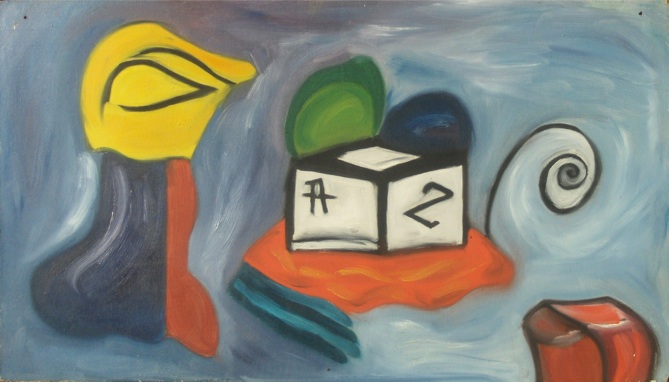
The Dice is cast (Le Dé en est jeté), 1940, oil on wood

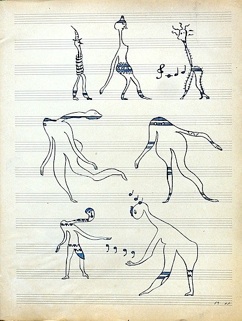
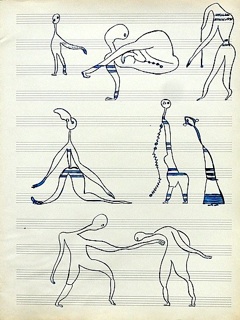
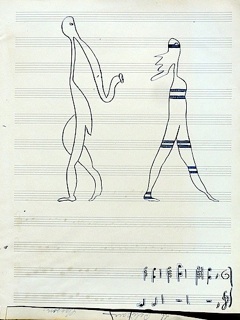
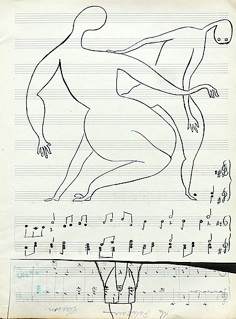
In 1937, at the age of fourteen, Madeleine Novarina began painting fantastic gouaches which were admired by her cousin, Constant Rey-Millet, a painter and founder of the magazine "Le Taudis" (The Slums). In the house of the latter, at La Tour Faucigny, she met his visiting friends: C. F. Ramuz, Igor Stravinsky and Jean Giono.
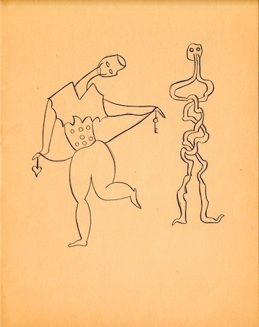
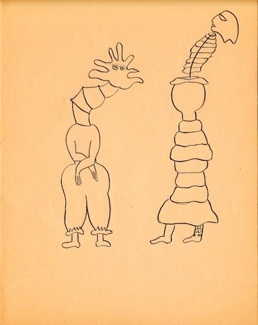
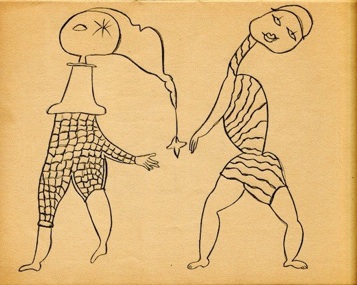
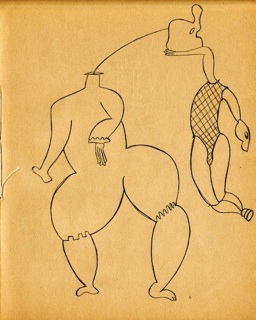
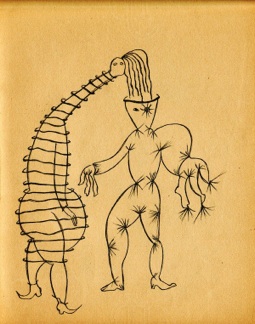
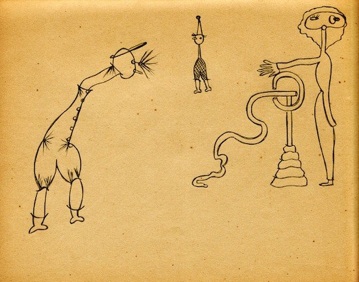
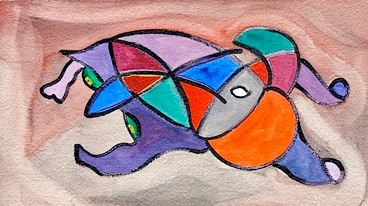
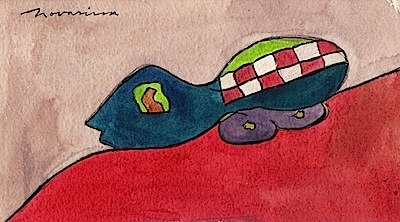
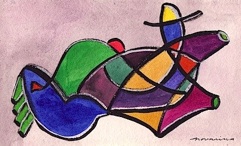
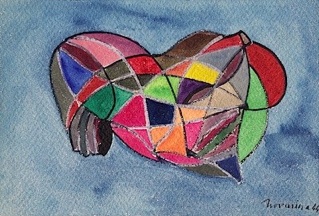
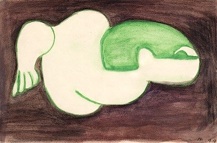
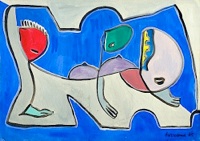
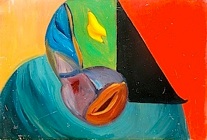
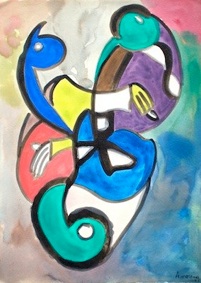
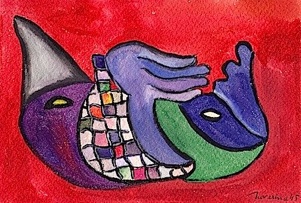
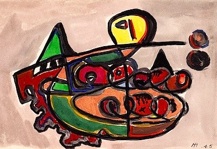
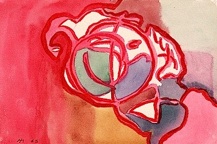
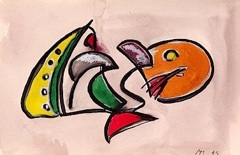

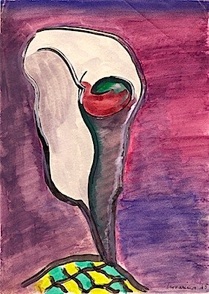
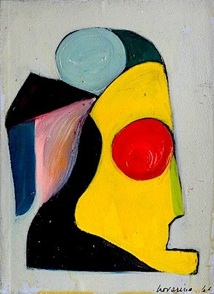
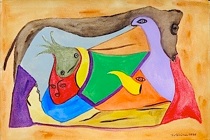

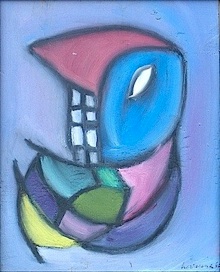
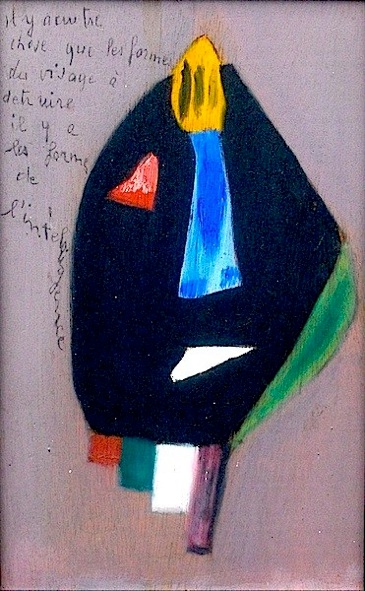
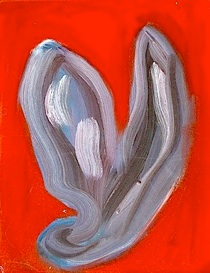
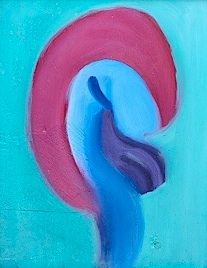
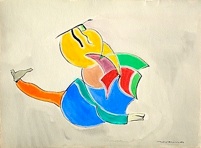
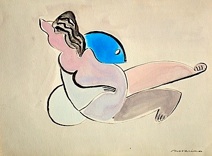

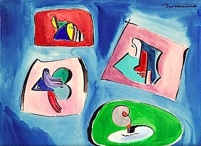
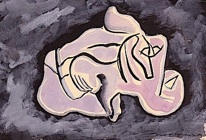
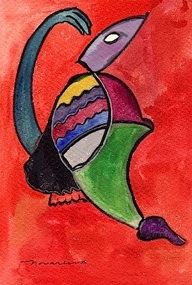
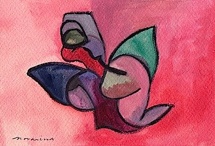
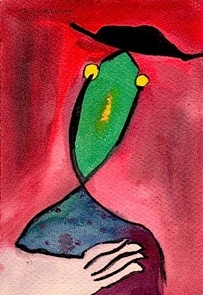
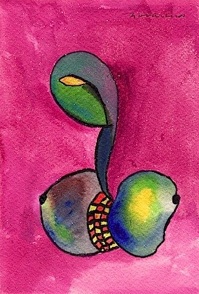
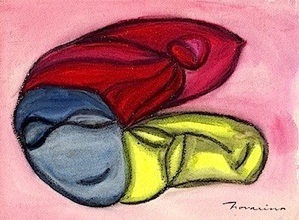
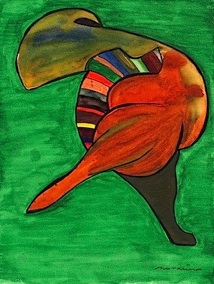
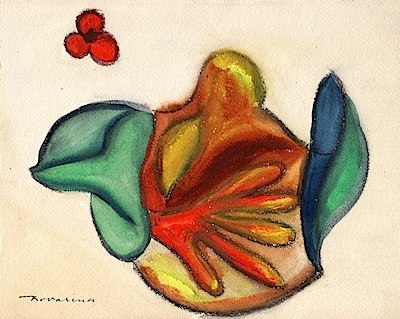
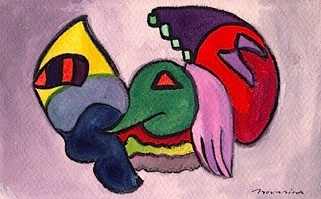
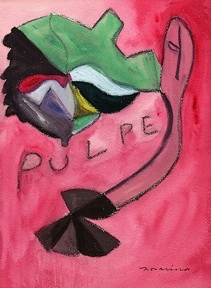
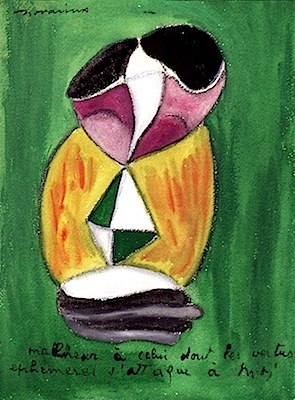
Tableau manifeste, Oil on wood, 1943
« Il y a autre chose que les formes du visage à détruire,
il y a les formes de l’intelligence. »
Le Toutarien ou l’animalicieux, 1945
Woe to he whose ephemeral virtues attack me
Gouache on paper, date unknown
Madeleine Novarina painted her his first picture at the beginning of the war, in 1940, when she was not yet seventeen, at the back of of a Passive Defense sign indicating: Area A7. She painted a character with a bird's head in front of a large dice whose visible sides show the letter A and the letter Z, and called it Le Dé en est jeté (the die is cast).

Moving-lives (Nature-vives)
Madeleine Novarina liked to collect rocks and driftwood from Lake Geneva, roots to paint them with a brush or to create sculptures-assemblies. She came up with the idea of composing Moving-lives, i.e. the opposite of still-lives, improvising with her body and a found object or a chosen landscape, a sort of live painting.

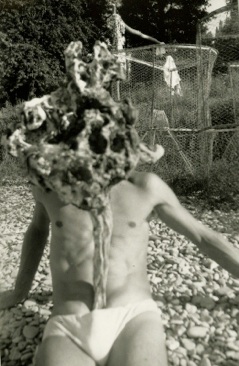
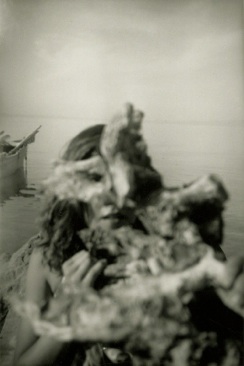

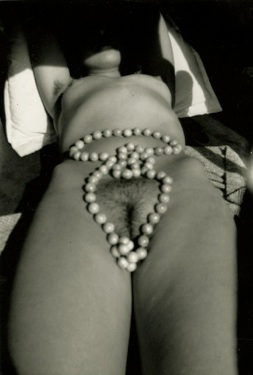
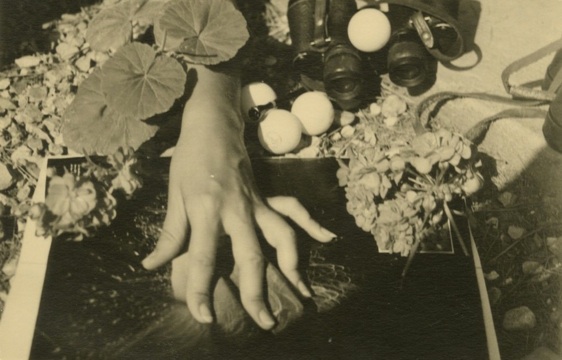
Voici comment je prends racine,
Série des Nature-vives, 1946
The Belt of Venus,
Moving-life, 1958
IMEC/Fonds Alexandrian
Le monument aux vivants, 1945
moving-life composed with a root and the body of her brother, Louis Novarina
IMEC/Fonds Alexandrian
This is how I am taking root
Moving-life, 1946
Whilst spending her holiday at Marie Bacharach’s (her sister) in Mar Vivo, Madeleine Novarina often improvised outdoor happenings, such as Le Second mariage de la mère Ubu (The Second Marriage of Mother Ubu), in 1958, which was the subject of an amateur film. Also in 1958, she drew eyes and mouths with toothpaste on all the giant cacti in the garden, turning them into hallucinating characters watching the guests. There, Madeleine created and photographed many Nature-vives using her own body. In one of them, La Ceinture de Vénus (The Belt of Venus), she created a pattern around her vulva by surrounding it by a large amber necklace twisted three times.
Madeleine Novarina, Sarane Alexandrian, éditions de l’Amateur, p. 99
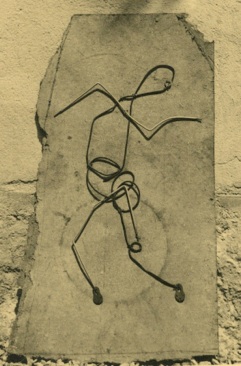
Dance of joy, concrete and wire, 1945
IMEC/fonds Alexandrian
Palettes-Women
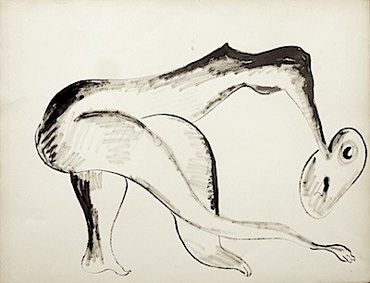
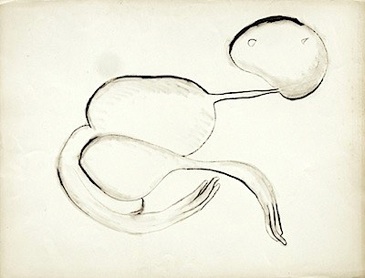
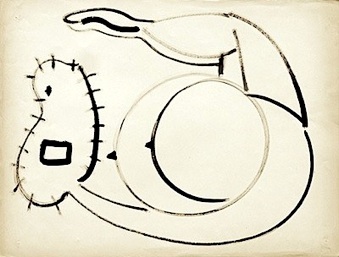
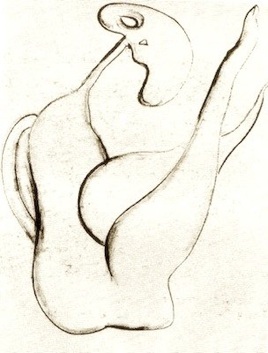
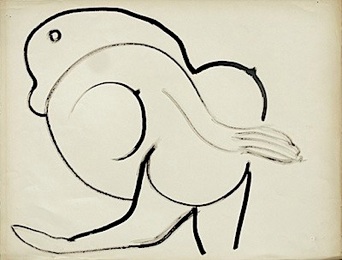
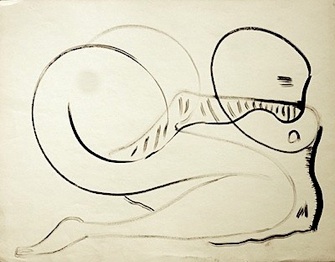
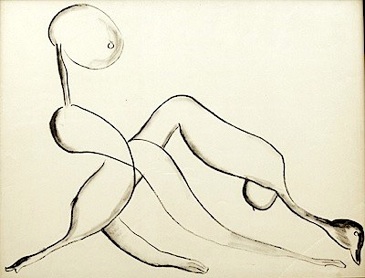
In 1944 and 1945, Madeleine Novarina painted restlessly and with all available media, taking the de-nailed seat of a chair to paint on it, "Le Poussin qui s'étonne de la vie (chick surprised by life). Frescoes were decorating the walls of her bedroom, were she also wrote provocative mottoes with colourful letters. Her vocation as a painter was so strong that she imagined a type of woman whose head was shaped as a palette; the hole for the thumb both suggested the eye and the mouth. This hybrid creature is featured in large drawings in brush and ink as part of her series Scènes du pays d'où (scenes from the country where) and La Femme de demain (tomorrow’s woman) who lifts her legs to express joy.
Madeleine Novarina, text by Sarane Alexandrian, p. 27
Madeleine Novarina used to mischievously say: "I was born surreal" - which is also the only way of being. For André Breton, Surrealism was not an art school, but a state of mind leading to combine fantasy with reality in order to live fully. The members of the Surrealist group instantly saw this state of mind in the twenty-two years old newcomer from Thonon, who had come to Paris with her early work. She was immediately invited to take part in their Brussels exhibition "Surrealism in 1945", alongside Magritte, Chirico, Arp and Max Ernst.
Madeleine Novarina and surrealism, p. 4
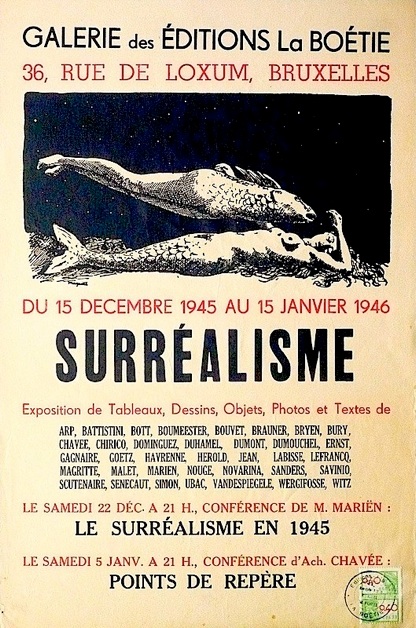
From December 15th, 1945 to January 15th, 1946 Madeleine Novarina was part of the first post-war Surrealist exhibition Le Surréalisme en 1945 (Surrealism in 1945), curated by Paul Nougé and Marcel Mariën at La Boétie gallery, in Brussels. Her painting Trois entreprises (Three Companies) was placed between works of Paul Klee and Max Ernst.
In 1946, Madeleine Novarina became friend with Victor Brauner. Presented in June to André Breton who had returned from the United States, she became a member of the Surrealist group and attended all the weekly meetings. She showed two paintings, a gouache and two drawings at the Surindépendants exhibition.
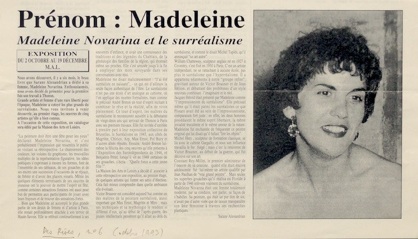

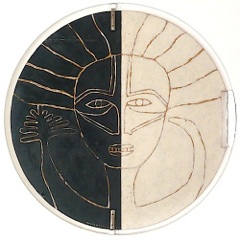
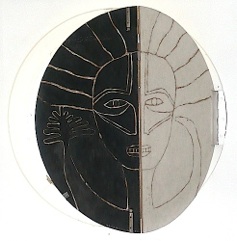
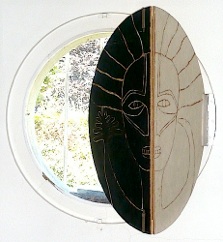
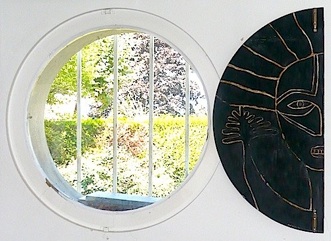
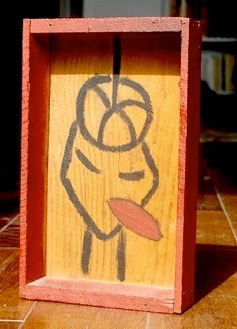
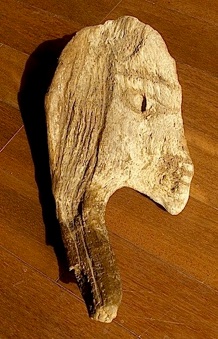
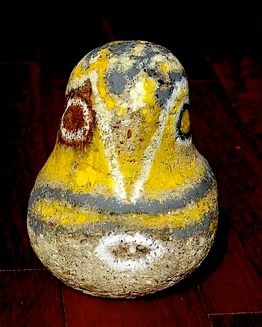
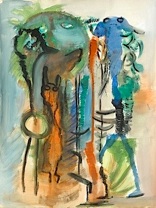
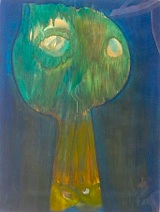
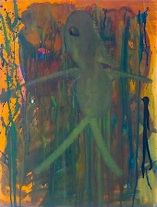
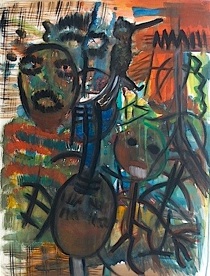

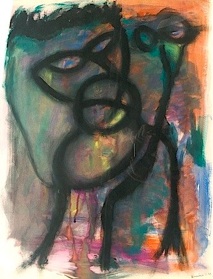
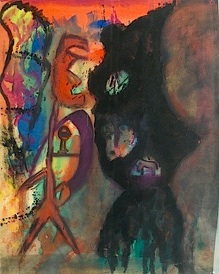
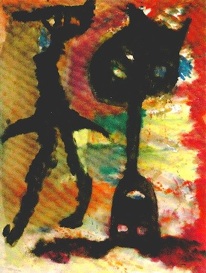
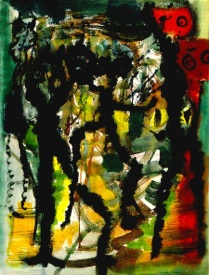
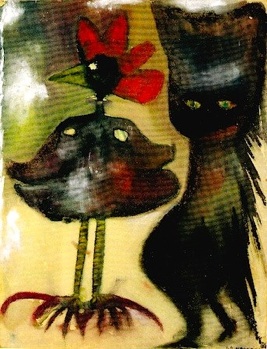
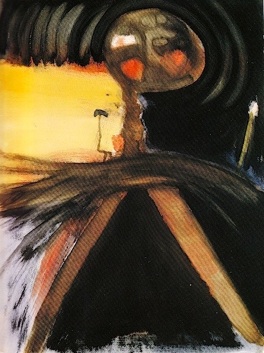
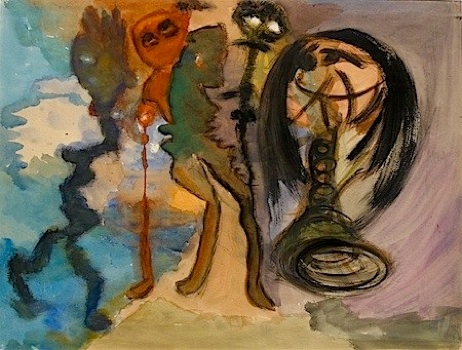
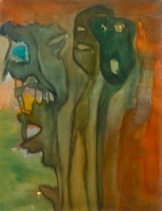
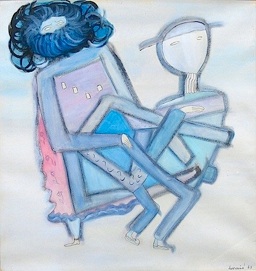
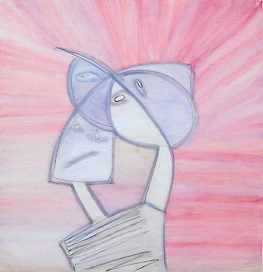

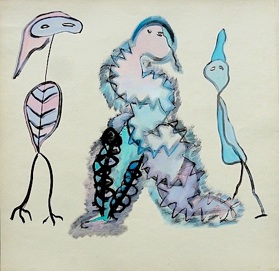
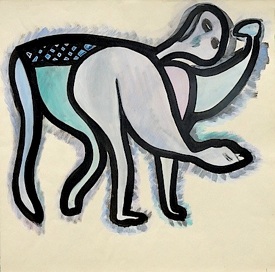

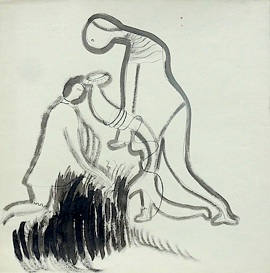
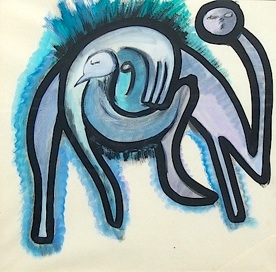
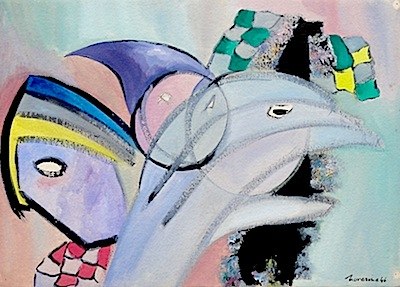
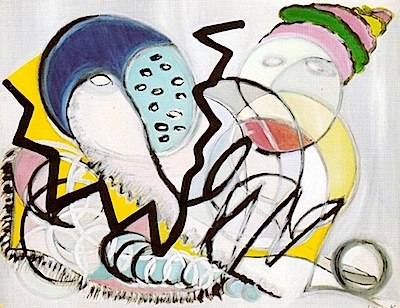
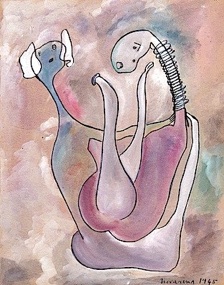
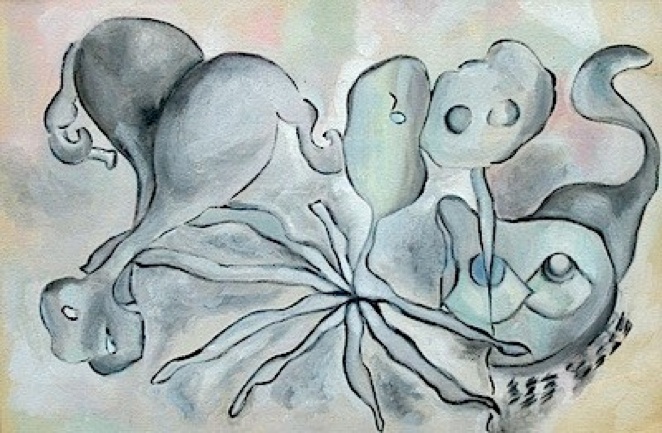
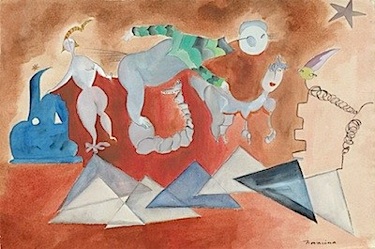

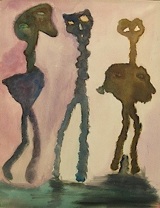
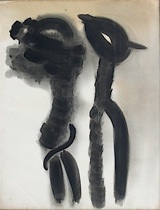
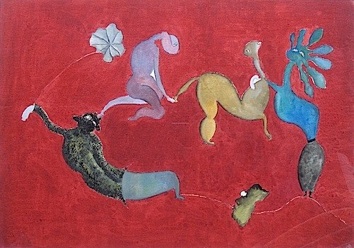
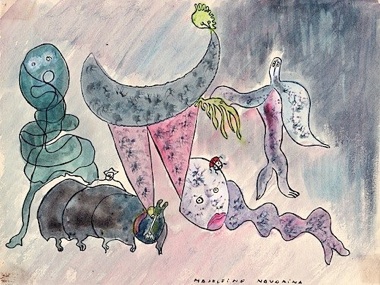
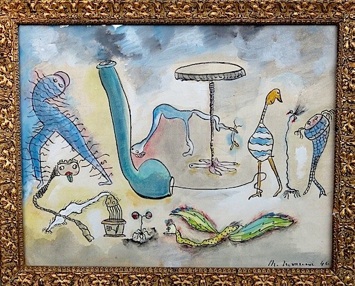
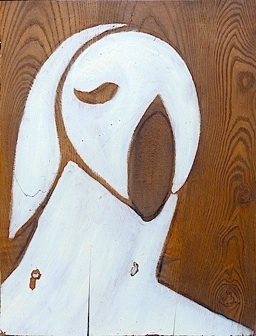
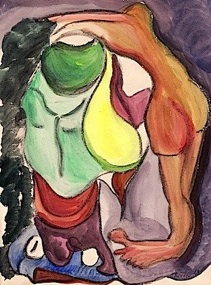
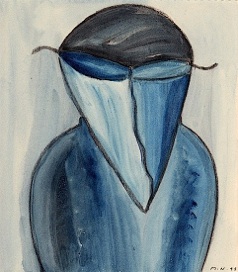
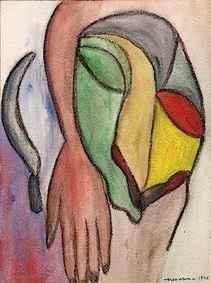
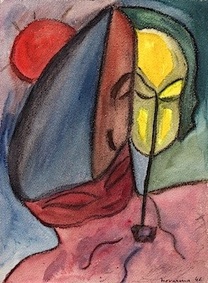
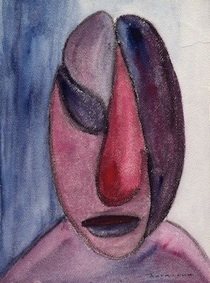
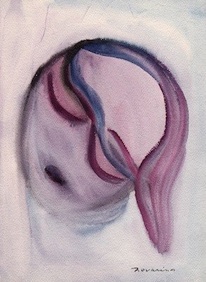
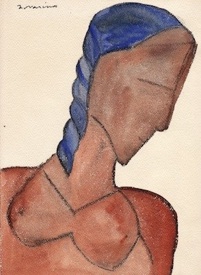
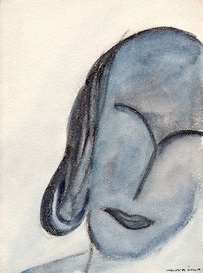
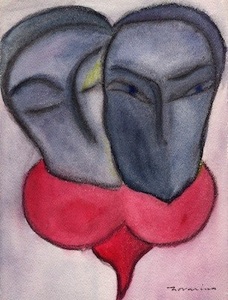
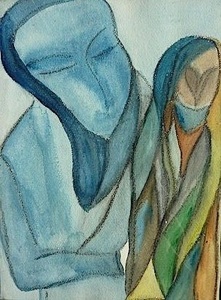

Inks in splashes: the Supervisions
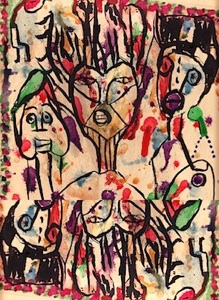
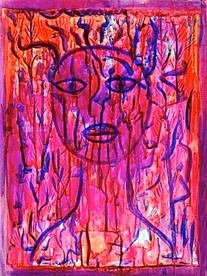
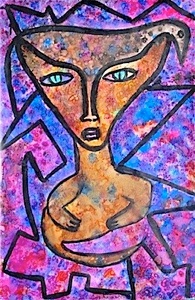
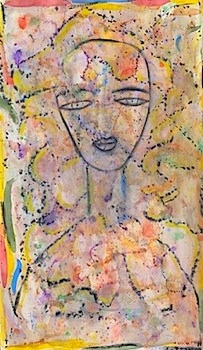
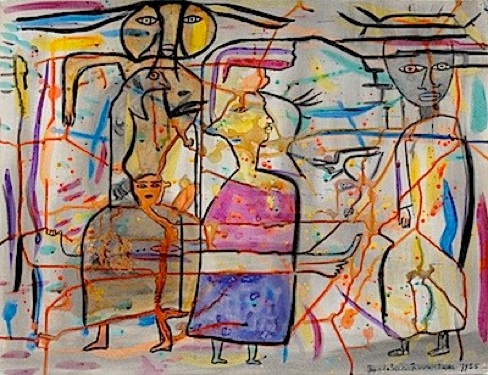
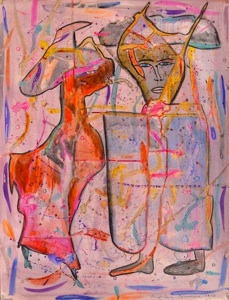
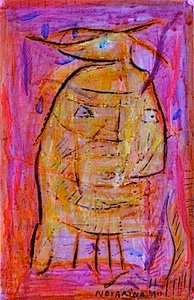
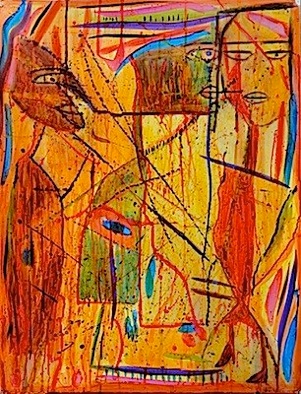
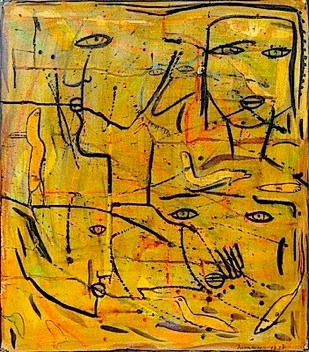

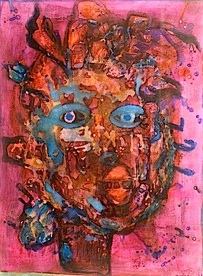
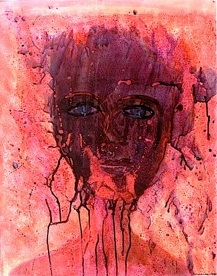
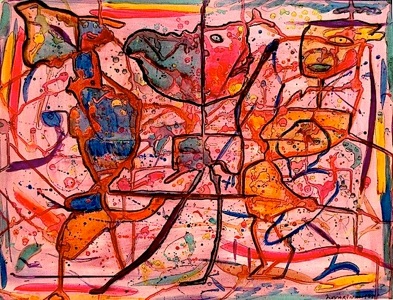

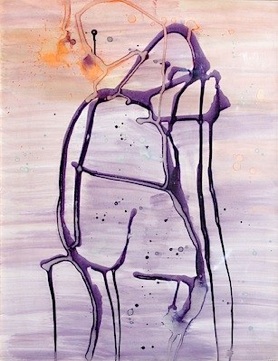
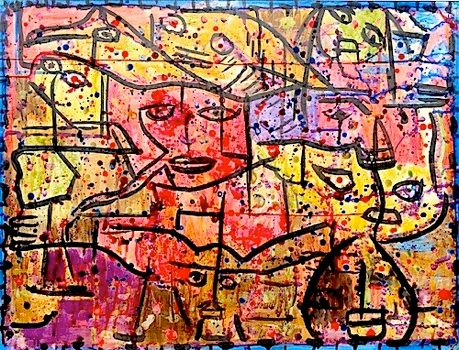
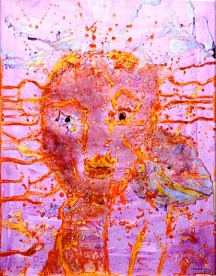
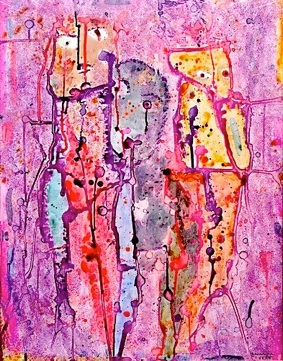
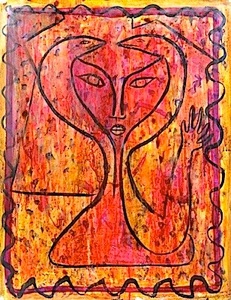
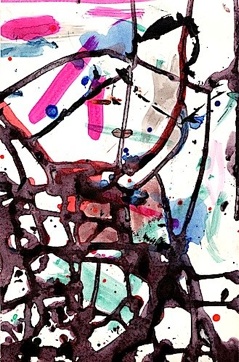
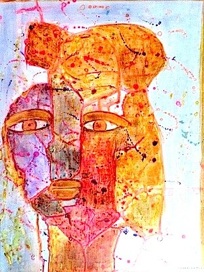
The main activity of Madeleine Novarina’ surrealist period consisted in splashing ink on large sheets of Bristol board. Her ink works, which she called "supervisions" do not stand for superior visions, but revised, supervised visions, spontaneously born out of a methodical process or patiently developed from expansive automatism.
The ink was thrown away from the surface or dripped onto it and she was spreading it by rotating or tilting the sheet and sought in the spoils a vision she could then emphasise with the brush.
Some of these ink drawings such as as La Parade nuptiale, Le Couple flânant ensemble, Les Amants dans le désert or Le Feu du désir (courtship, couple strolling together, lovers in the desert, the fire of desire), feature a man and a woman expressing their joy to gaze at each other, to dance with one another, to walk together or kiss.
In L'Intermédiaire (the intermediary), a character who is none other than Victor Brauner (his anxious eye, his half-humble-half-proud attitude of the times can be recognised here) induces the encounter between the two lovers and seems to prevent the girl from reaching the boy.
Varina
To announce that she felt transformed as a new woman thanks to her divorce from an unhappy first marriage in 1956 and her love affair with Sarane Alexandrian, she used the name "Varina" to sign a series of gouaches and drawings of a wild gaiety, real Caprices, describing her intimate times with the beloved man.
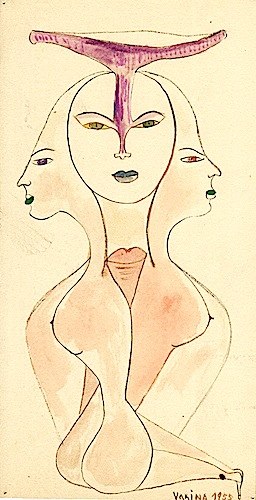
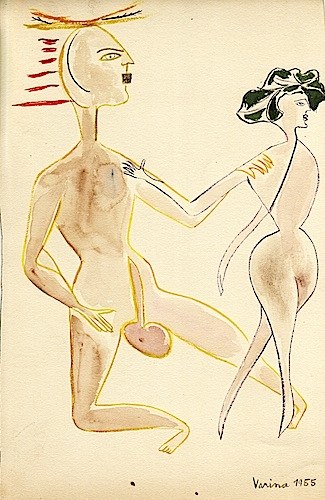
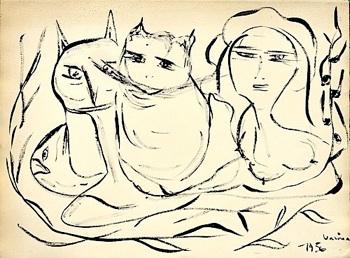
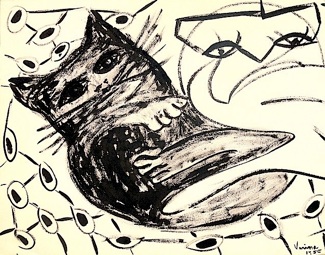

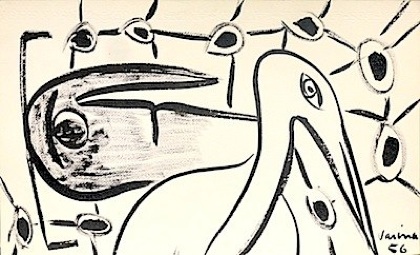
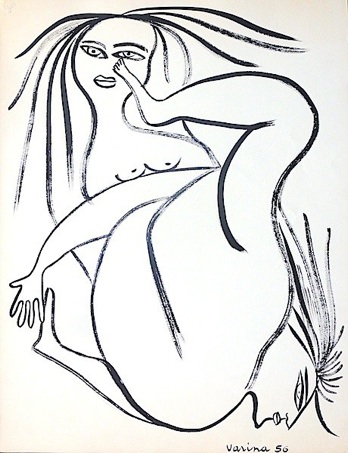

Early works, 1935
Le Retour des hirondelles, 1935
The Die is cast (Le Dé en est jeté), 1940, oil on wood

Hand with things (La Main aux choses)
Moving-life, 1959
IMEC/fonds Alexandrian
Folding shutter, painting on wood, 1952
Varina’s Glee, 1956
Monique Pignet’s collection
Gouache on paper, 1946
Monique Pignet’s collection
Madeleine Novarina, text by Sarane Alexandrian, p. 74
Early works, gouaches, Palettes-Women (Femmes-palettes), Moving-lives (Nature-vives), Supervisions and Varina
Gouaches
Eye of the Caves
1948
Prickly Spectators, Moving-life produced with the cacti of a garden in Mar Vivo (Var, France), 1958
IMEC/fonds Alexandrian
Gouache on wood, 1946
IMEC/Fonds Alexandrian
A Princess of better days,
1956, collection Christophe Dauphin
Créature du pays d’où, 1945
Femmes-palettes Series
La Femme de demain, 1945
Femmes-palettes Series
Stop ! Or the Shadow Area Customs Officer, 1948
Night Concert in the Country Where from
1948
The dinner of the famous Predator, 1948
Small Tree with Glasses, 1948
One cannot believe one’s eyes, 1948
The Living Scarecrows, 1948
Sabbath in the Moutains, 1948
The Fauna of my Dreams, 1948
She who dances on a Volcano, 1948
Painting guide the Architecte, 1946
The Glare, 1946
Hens seeking a man, 1946
The Child found like a Mushroom, 1946
Lovers of the great Hights, 1946
Christophe Dauphin’s Collection
T’es pacol de lectiver, 1945
The Vegetal Octopus, 1946
Antediluvian Clowning, 1947
Apparition of I don’t know what 1948
Watercolor, 1946
Pierre Novarina’s collection, Les Gets, France
Watercolor, 20 x 28 cm, date unknown
Françoise Raslovleff’s collection, France
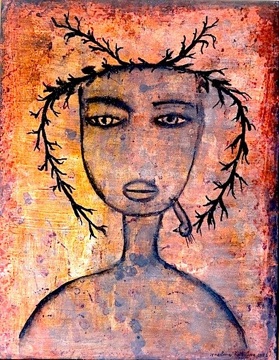
The Branch-Woman,
Valère Novarina’s collection
Early works, 1935
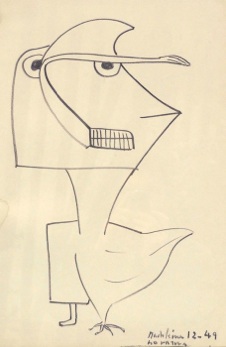
Doubting Mother Hen, 1949
Maison de l’Art Vivant Collection
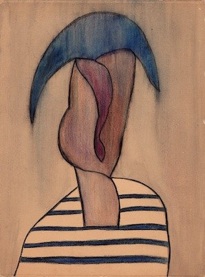
What is happening there
1948
Barbaric Procession, 1949
La gardienne de l’espérance, 1953
The Courtship, 1955
L’Intermédiaire, 1955
L’Attente du bonheur sous la pluie, 1956
Varina caressed by her Cat, 1956

Le Fruit vivant, 1943
La Coquelicote, 1943
Magritte’s poster for the first post-war Surrealist exhibition, which Madeleine Novarina took part in. The last name on the list, Witz, is the pseudonym of Christian Dotremont, who Magritte had excluded from the event.
L’Ensorceleuse, 1946
L’oiseau à la fenêtre, 1946
The big beast pregnant with a bird, 1946
The Contributor
1948
Mysterious game, 1948
The Metallic hair of a little thing, 1948
The Flirt, 1948
Partir du bon pied, 1945
Femmes-palettes Series
The Incredibles’ Hot Spot, 1956






